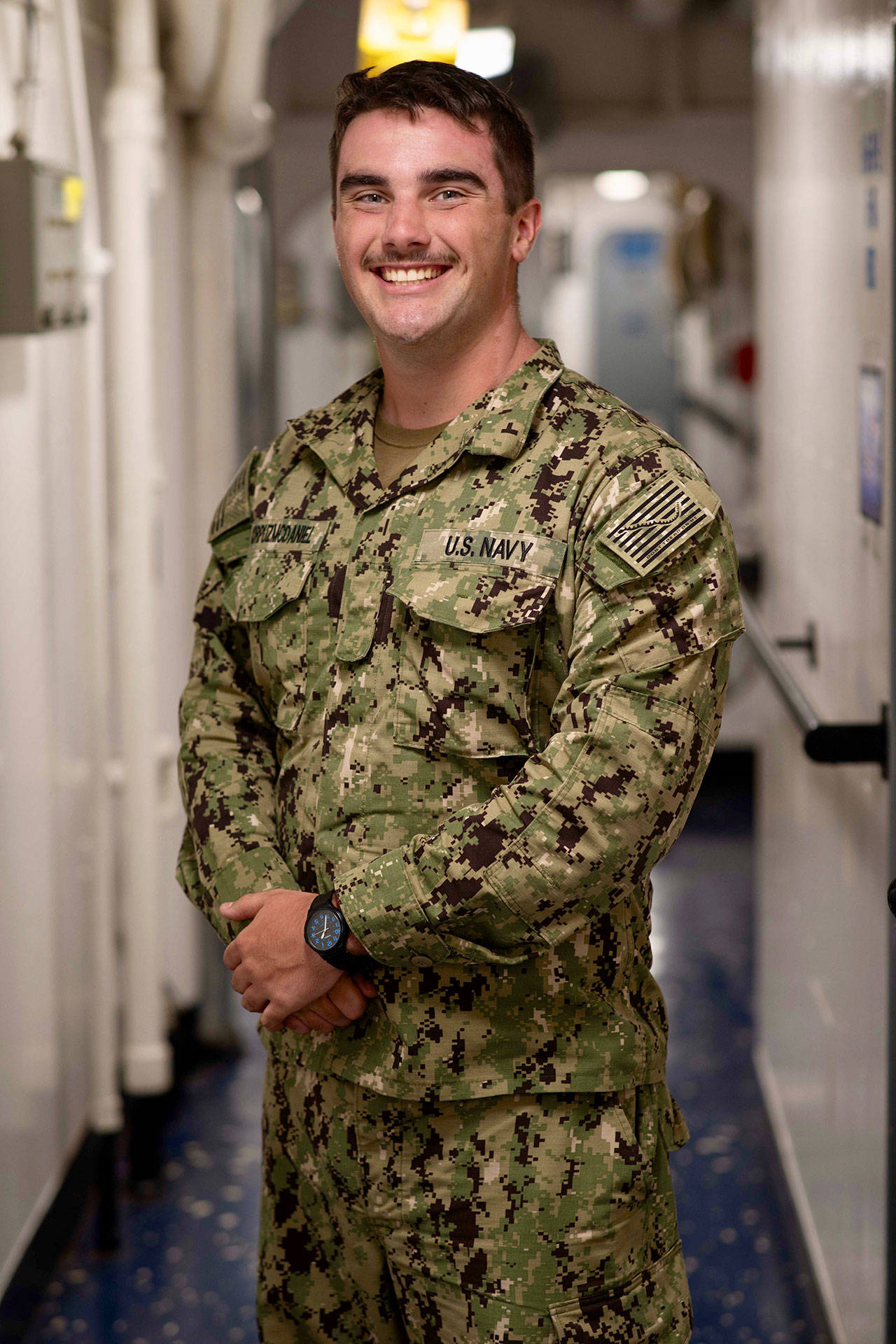By Erica R. Gardner/chief mass communication specialist, Navy Office of Community Outreach
As part of a hybrid crew of sailors and civilian mariners aboard the expeditionary submarine tender, USS Frank Cable, Auburn’s Justin Corpuz-McDaniel provides critical maintenance capability to the U.S. Navy’s submarine force in the Pacific.
The Navy hospitalman, a 2016 Auburn Mountain High School graduate, is serving aboard the Guam-based submarine tender, one of only two such ships in the U.S. Navy. The Frank Cable and its crew provide maintenance and resupply capabilities in port and at sea.
A hospitalman is responsible for providing medical care to Navy personnel, family members, retirees and civilian government employees.
“Helping people is the most rewarding part of my job,” Corpuz-McDaniel said.
Corpuz-McDaniel credits his success in the Navy to many of the lessons he learned in Auburn.
“Life lessons I learned were ‘don’t give up,’ and if I want something, I should just do it,” Corpuz-McDaniel said.
While Guam is home to four Los Angeles-class attack submarines, Frank Cable’s primary clients, the ship also offers repair and logistic services to other Navy ships, like cruisers and destroyers. The submarine tenders provide maintenance, temporary berthing services and logistical support to submarines and surface ships in the Pacific Ocean and in the Persian Gulf, Red Sea, Arabian Sea and parts of the Indian Ocean.
Carrying a crew of more than 600, Frank Cable is 649 feet long and weighs approximately 23,493 tons.
According to officials at the U.S. Navy’s Pacific Fleet headquarters in Pearl Harbor, Hawaii, the ships, submarines, aircraft and Navy personnel forward-deployed to Guam are part of the world’s largest fleet command and serve in a region critical to U.S. national security. The U.S. Pacific Fleet encompasses 100 million square miles, nearly half the Earth’s surface, from Antarctica to the Arctic Circle, and from the West Coast of the United States to the Indian Ocean.
All told, there are more than 200 ships and submarines, nearly 1,200 aircraft, and more than 130,000 uniformed and civilian personnel serving in the Pacific.
The integrated crew of sailors and civilian mariners builds a strong fellowship while working alongside each other. The crews are highly motivated, and quickly adapt to changing conditions. It is a busy life of specialized work, watches and drills.
“It is hard for a corpsman being on a ship,” Corpuz-McDaniel said. “I am learning both sides of my rate in medical and dental.”
Though there are many ways for sailors to earn distinction in their command, community, and career, Corpuz-McDaniel is most proud of being in the Navy for only a year with many accomplishments to show for it.
“Serving was a big goal for me,” Corpuz-McDaniel said. “It took a while for me to get physically ready to join, and I looked up to military members. I get to save the people I look up to. I am the first military member in my family since my grandfather.”
As a member of one of the U.S. Navy’s most relied-upon assets, Corpuz-McDaniel and other sailors know they are part of a legacy that will last beyond their lifetimes, one that provides a critical component of the Navy the nation needs.
“Serving in the Navy means helping any way I can,” Corpuz-McDaniel. “Being a dental tech, I enjoy putting smiles on people’s faces.”


